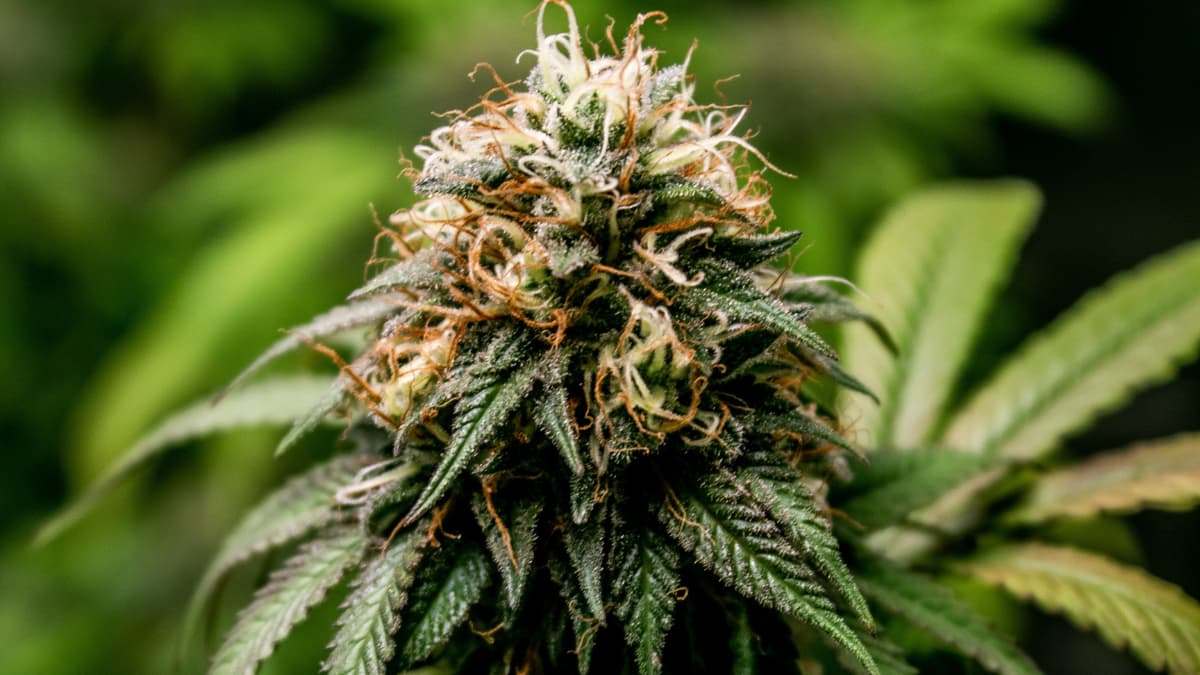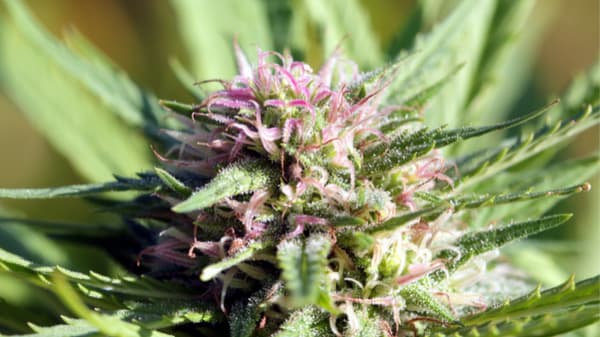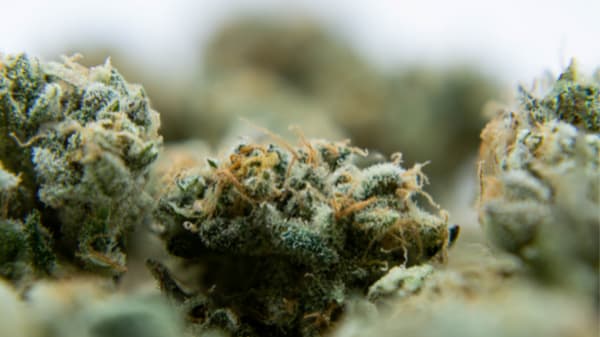PGR Weed: What Are PGRs?
The cannabis market is snowballing; naturally, cultivators are fighting for a big slice of the pie.
To compete, some of them have started using synthetic plant growth regulators (PGRs) to increase their production.
But are PGR buds different from natural cannabis buds? And are there any health risks you should know about? Spoiler: Yes, and yes! Keep reading to learn the details.

What is PGR Weed?
PGR weed is marijuana grown with the help of added chemical hormones.
PGR stands for “plant growth regulators”. These are artificial hormones that affect a plant’s development. They are increasingly being used to help maximize cannabis bud production.
There are chemically and naturally derived PGRs. Unfortunately, chemical PGRs and associated residues can have some of the harshest effects on health.
Some growers like to use PGRs because of the higher yields. But others are wary of how it can change the plant profile.
You see, PGRs may noticeably affect the flavor of marijuana. And there are still many questions regarding the safety and effectiveness of PGR-grown cannabis.
PGRs may come included in store-bought growth boosters, nutrients, and vitamin enhancers. So some growers might not even know they are using them.
This is part of the problem when it comes to PGR weed. Consumers like me and you want to make educated decisions about what we put into our bodies. But if we don’t know what types of chemicals are in our products, we can’t accurately make that judgment call for ourselves.
So how can we tell the difference between PGR cannabis and natural weed if the growers don’t tell us?
Related Read: Laced Weed
PGR Weed VS Natural Bud
PGRs work by activating growth-stimulating genes in plants. Once they are activated, the plants immediately start growing and becoming larger.
Cells take in more water and the cell walls expand. So the extra weight of PGR cannabis is due to water retention and additional cellulose.
But the THC content and the number of other cannabinoids and terpenes are compromised. This results in diluted, low-quality buds. Yup. Not top shelf at all.
This is one of the biggest differences between PGR weed and natural bud.
And, there may be potential health risks that come with growing cannabis with synthetic hormones.
These may include hepatotoxicity (liver toxicity), nephrotoxicity (kidney toxicity), genotoxicity (DNA-damaging), neurotoxicity (nerve toxicity), even carcinogenicity (cancer-causing) and teratogenicity (congenital disabilities).
Nonetheless, at this point, more research must be done before anyone can confidently say what PGR cannabis does to human health. But, some commonly used PGRs are paclobutrazol, daminozide, or chlormequat chloride. We do know what some of the effects of these chemicals are.
Paclobutrazol works by interfering with natural cell growth. Typically, cannabis plant cells grow and elongate. But this PGR causes them to divide rapidly.
This causes artificially dense buds. An increased total weight might be good for some growers, but not consumers. This is because it interferes with natural cannabinoid and terpene development. So just like we mentioned above, the buds may be fat, but they won’t be dank.
Daminozide is a PGR commonly used for growing marijuana. It has been banned for food use by the FDA since 1998. But it is still allowed for use on ornamental plants.

Daminozide (sometimes referred to as Alar) can increase cannabis buds by shutting down the pathways to the stems and leaves.
Chlormequat chloride isn’t as well understood as the prior two hormones, but it works in a similar way. It pushes extra energy to the buds by retarding the growth of the stems and leaves.
Marijuana grown with plant growth regulators can end up with leftover chemicals that you don’t want to put into your body. And they may not have the well-balanced cannabinoid content you want from marijuana.
Many anecdotal accounts also describe PGR weed as having different flavors, effects, and textures than naturally grown cannabis.
Trace amounts of pesticides and PGR molecules have been found in various samples of cannabis. So there is a risk that you may smoke some of these chemicals if you smoke PGR weed.
You may or may not consider the risk worth it after considering that PGR buds can have depleted cannabinoids and terpene concentrations.
Usually, the trichome count is mild to low. This means you might not even get high. At least not like you will from naturally grown cannabis.
How to Identify PGR Weed
The easiest way to detect PGR weed is to read a verified third-party lab report that identifies the presence of PGRs and lists their concentrations.
But as this is not an option for many cannabis shoppers, the second easiest way to detect it is to learn how to recognize its appearance.
Nugs grown with plant growth regulators are incredibly dense. So much so that they can be hard like rocks.
Pay attention to how nugs feel in your hands when you buy new weed. Heavier buds are a tell-tale sign of the use of PGRs.
Another way to identify PGR weed is to look at the color. Regular cannabis strains are usually bright or dark forest green with burnt orange pistils and purple hues. But PGR weed has a dark brown color with brown or red hairs.
PGR weed has fewer trichomes than natural cannabis plants. You won’t have to worry about getting sticky fingers from handling your buds. And it lacks terpenes too.
You just don’t get the dank smells that usually emanate from fresh, high-quality buds. Not even if you break them apart at your fingertips. You might be able to find some earthy aromas reminiscent of soil if you try hard enough though.
It is always a great idea to get to know where your weed comes from. You might be able to identify PGR cannabis by asking the right people.
Speak with dispensary staff or directly with growers to see how they farm their plants. Ask where they are grown and what kind of fertilizers or chemicals are used in the process. Most upstanding cannabis growers are happy to provide this information if they have it.

What Does PGR Weed Look Like?
To outline the information above, weed grown with plant growth regulators is usually dense, heavy, and brownish in color with brown hairs or red hairs.
If it fits this description, looks dry, and you don’t see the crystallized trichomes you are used to seeing, you may be looking at PGR weed.
These are just some of the things you can look for to help you identify cannabis grown with plant hormones. However, there is no full-proof visual assessment that can be done to see if cannabis has been grown naturally or not.
PGR Weed Side Effects
Studies are still trying to catch up to the rapid growth of the cannabis industry. So right now there aren’t too many studies on PGR weed.
The ones that are available suggest PGR consumption may lead to a high level of PGR residue ingestion and an increased risk of some severe conditions.
This is most likely because the chemicals that are used as PGRs, like daminozide, paclobutrazol, and chlormequat chloride, are known to have some severe side effects on their own.
For example, Daminozide is considered by the Environmental Protection Agency to be a likely human carcinogen.
There is evidence that paclobutrazol has long-term adverse health effects. It may cause issues with male reproduction and liver health. And it may turn into a carcinogen when heated, a.k.a smoked.
Chlormequat chloride is only permitted for use by the FDA for crops not intended for human consumption. But US health authorities speculate that high doses of it can cause skin and eye irritation along witth throat and heart issues.
When it comes down to it, PGRs aren’t necessary for growing healthy, full, dank cannabis buds. It might make growing them a little easier. But it puts consumers’ health at risk. So no. Non-organic PGRs are not worth the risk.
But, there are some organic PGR options that come with a much smaller risk profile. For example, kelp, salicylic acid, and triacontanol. These things are non-toxic compounds that stimulate plant growth.
Overall, they are all generally considered safe. And they can have effects as big as the ones achieved with synthetic plant growth regulators.
If you do smoke PGR weed, try to stick to the organic kind. But if you can opt for natural cannabis, then that is even better.
Wrapping Up PGR Marijuana
Lacking regulations in the cannabis industry can make PGR weed seem elusive and scary. But the more you understand about this weed, the better you can avoid it.
Be on the lookout for heavy, dense, and flat-smelling nugs. Try to purchase cannabis that is verified by a third-party lab report to make sure you are not spending your money on unwanted chemicals.
This can help the industry shift to more sustainable and health-conscious practices. And it helps you to only enjoy natural buds that deserve to be lit.
Frequently Asked Questions
What does PGR stand for?
PGR stands for “plant growth regulators”. Plant growth regulators are compounds that help to enhance the growth of plants.
They are used in the cultivation of all kinds of plants, including the ones we eat, but those are subject to regulation, while cannabis is not.
They can affect when plants or fruits ripen, how the roots grow, how the stems and leaves grow, and more.
Are natural PGRs safe?
There are many types of PGRs, and natural PGRs are safer than synthetic ones.
But it is difficult to say that natural PGRs are completely safe. However, natural PGRs like chitosan and kelp seem to be safe options with no serious health hazards.
Some PGRs have been restricted in commercial agriculture while dispensary cannabis is not regulated the same way, thus leading to potential health hazards.
What does PGR cause?
For plants, PGRs cause rapid growth. This leads to bigger, denser buds. And this leads to more money for the grower who ends up selling those buds.
For consumers, PGRs can cause some serious health hazards. Certain synthetic PGRs like daminozide, paclobutrazol, and chlormequat chloride can cause side effects like reproductive and internal organ harm, and tumors.
Most likely you would need to consume a significant amount of PGRs to cause these effects, but it is still a possibility that should be taken seriously since PGRs can be highly ingested in contaminated cannabis.

